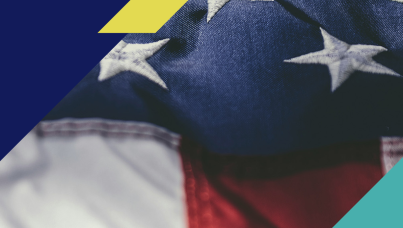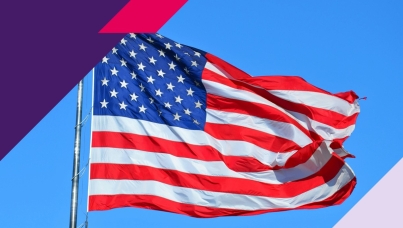How America Pays for College 2023
Washington, DC, August 9, 2023
For 16 years, Sallie Mae has surveyed college students and parents of undergraduate students about their attitudes toward higher education and how they’re paying for it. How America Pays for College explores education funding sources—from family income and savings to scholarships, grants, and borrowed funds—and evaluates trends in payment strategies over time.
This year’s report provides learnings about families’ awareness of the financial aid process including researching and applying for scholarships, completing the Free Application for Federal Student Aid (FAFSA), and understanding financial aid awards. The report also considers the steps undergraduate families took to plan for paying for higher education. Finally, for the first time, How America Pays for College 2023 explores how students attending public Historically Black Colleges and Universities (HBCUs) approach higher education financing.
Scholarships and grants were used by 76% of families and covered 29% of costs, and four in 10 (41%) families reported borrowing for college, covering 19% of costs. On average, students borrowed $11,337 (up 21% from last year) and parents borrowed $13,507 (up 25% from last year).
About 7 in 10 families reported completing the FAFSA but roughly the same number of families (72%) were unable to correctly identify when the FAFSA becomes available, potentially leaving thousands of first-come, first-served money on the table. The recent announcement that the new 2024-2025 FAFSA will be shifted from October to December could add to more confusion for students and families.
The majority of students currently attending a public HBCU say they’ve always known they would continue their education after high school (63%). Moreover, 71% of these students say they never considered higher education alternatives, such as career training, trade school, or apprenticeship. However, while the majority committed to their educational path early on, costs play an important part in their decision-making process.
For students at public HBCUs, financial consideration was most often the deciding factor in selecting which school they would attend, significantly more often than among those who are attending 4-year public schools overall. More specifically, the top three reasons public HBCU students said they selected their school were the affordability of the program (47%), the school being located in-state (46%), or the scholarship or aid they received from the school (39%).
For the full report and additional analysis, visit Salle Mae.
About this Study
Sallie Mae has again partnered with Ipsos, a global independent insights and analytics company, to conduct this study.
How America Pays for College 2023 reflects the results of an online survey, in English, with:
- 986 parents of undergraduate students, ages 18 to 24
- 1,213 undergraduate students, ages 18 to 24, including 226 students attending HBCUs.
The research was conducted between March 31, 2023, and May 8, 2023.
Dollar and proportional amounts in this report are averages that reflect composite representations intended to illustrate how the “average” family paid for college. The composite is a computed formula that spreads individual responses across all survey respondents.
The geographic regions discussed mirror those used by the U.S. Census Bureau.
For more information on this news release, please contact:
Jennifer Berg
Director, US
Public Affairs
+1 773 251-0171
[email protected]
Sample Design
The sample for this study was randomly drawn from Ipsos’ online panel, partner online panel sources, and “river” sampling and does not rely on a population frame in the traditional sense. Ipsos used fixed sample targets, unique to the study, in drawing sample. HBCU student oversample was randomly selected from a representative panel of college students nationwide from a 2-year or 4-year university. This sample design was a disproportionate stratified sample of parents of college students and college students. After a sample has been obtained, Ipsos calibrates respondent characteristics to be representative of the U.S. Population using standard procedures such as raking-ratio adjustments. The source of these population targets is 2020 American Community Survey data. The sample was stratified by additional variables, such as region and student enrollment status.
Weighting
To correct for the disproportionate stratified sample, both the parent and the student samples were weighted using a statistical technique called raking, in which all of the population marginal profiles of interest are replicated in the sample. The sample of parents was weighted by gender, age, race/ethnicity, region, education and by college information (region, size and type). The sample of students was weighted by gender, age, race/ethnicity, region, and by college information (region, size and type). The HBCU student sample was weighted to reflect their proportion within the student population nationwide. All of the demographic profiles used for both parents and students in the weights were sourced from the Current Population Survey (CPS). The National Center for Educational Statistics provided additional data for the college information weights.
Bayesian Credibility Intervals
The calculation of credibility intervals assumes that Y has a binomial distribution conditioned on the parameter θ\, i.e., Y|θ~Bin(n,θ), where n is the size of our sample. In this setting, Y counts the number of “yes”, or “1”, observed in the sample, so that the sample mean (y ̅) is a natural estimate of the true population proportion θ. This model is often called the likelihood function, and it is a standard concept in both the Bayesian and the Classical framework. The Bayesian 1 statistics combines both the prior distribution and the likelihood function to create a posterior distribution. The posterior distribution represents our opinion about which are the plausible values for θ adjusted after observing the sample data. In reality, the posterior distribution is one’s knowledge base updated using the latest survey information. For the prior and likelihood functions specified here, the posterior distribution is also a beta distribution (π(θ/y)~β(y+a,n-y+b)), but with updated hyper-parameters.
Our credibility interval for θ is based on this posterior distribution. As mentioned above, these intervals represent our belief about which are the most plausible values for θ given our updated knowledge base. There are different ways to calculate these intervals based on π(θ/y). Since we want only one measure of precision for all variables in the survey, analogous to what is done within the Classical framework, we will compute the largest possible credibility interval for any observed sample. The worst case occurs when we assume that a=1 and b=1 and y=n/2. Using a simple approximation of the posterior by the normal distribution, the 95% credibility interval is given by, approximately 2.5.
Calculating How America Pays for College
The primary goal of the How America Pays for College national survey is to understand how and what the “typical American family” is paying for a college education. To enable this understanding and for these figures to be tracked over time, Ipsos has continued to calculate figures for total cost for college, and the use and value of the variety of funding sources, in the same way as they have been calculated in previous waves.
About Ipsos
Ipsos is one of the largest market research and polling companies globally, operating in 90 markets and employing over 18,000 people.
Our passionately curious research professionals, analysts and scientists have built unique multi-specialist capabilities that provide true understanding and powerful insights into the actions, opinions and motivations of citizens, consumers, patients, customers or employees. Our 75 solutions are based on primary data from our surveys, social media monitoring, and qualitative or observational techniques.
Our tagline "Game Changers" sums up our ambition to help our 5,000 customers move confidently through a rapidly changing world.
Founded in France in 1975, Ipsos has been listed on the Euronext Paris since July 1, 1999. the company is part of the SBF 120 and Mid-60 indices and is eligible for the Deferred Settlement Service (SRD).
ISIN code FR0000073298, Reuters ISOS.PA, Bloomberg IPS:FP www.ipsos.com



